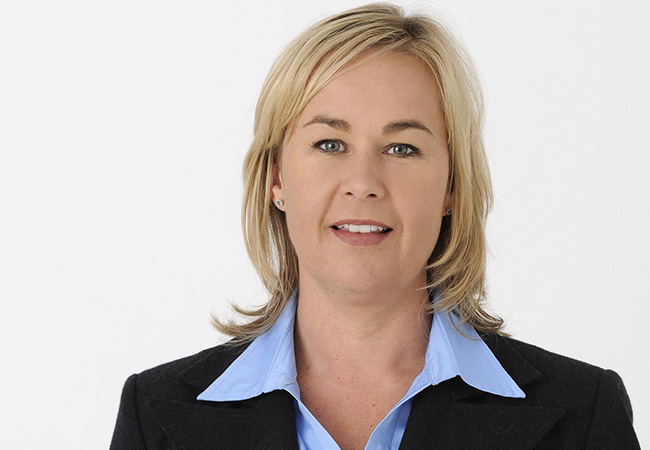While the changes over the past year have created a conducive environment for technology companies with highly-relevant products and solutions to thrive, there have also been major shifts in the media that they need to take into consideration when looking to build their brand among a business audience and the broader public.
The increased requirement for digital tools that enable models such as work-from-anywhere or study-from-anywhere has seen a growing number of technology companies looking to fill the gap, and exposure on established media platforms plays a key role in building brand credibility and driving growth. Similarly, the advent of digital technologies have changed the way in which media publications operate, including the implementation of paywalls to reserve content for paying subscribers.
Here are five things that B2B technology brands need to consider when looking to scale their public relations activities in an effort to build brand awareness and credibility and even contribute to lead generation:
Taking a partnership approach
Understanding a business, their product and service offerings, their unique value proposition, their aims and objectives for brand elevation, what their key messages are and where they need to be placed takes a collaborative effort from both the business and the agency.
Increasingly, brands need to start seeing their communications agency as an extension of their own team; this helps ensure that PR consultants are continuously kept abreast of the latest developments at the company, and can provide advice around how to get the best result from the public relations, digital and marketing – and ensure that the necessary preparations have been put in place to launch campaigns in a timely manner.
The right agency should help brands better understand the media landscape and trending topics, and how they can ensure that businesses participate in relevant conversations that also help achieve their objectives. This includes harnessing current topics (also known as newsjacking), taking advantage of themed days through an opportunity to provide comment (such as International Computer Security Day, World Telecommunication Day, Black Friday and Cyber Monday).
A partner is not just there to complete communications or marketing activities as part of a tick box exercise to meet SLAs, but takes a genuine interest in the elevation of a company’s brand in the relevant market. This is vital as agencies are essentially representing your brand when they interact with media professionals.
Working to a defined strategy
Starting with a strategy allows for a better understanding of the company, its areas of expertise, and products and services that are of interest in relevant markets. The strategy allows for company messaging and audience targeting to be defined, and for objectives and outcomes to be set – which allows for the measuring of return on investment over the retainer period.
A closer look at competitors’ PR, digital and social media efforts, and relevant conversations in the media helps in identifying the key differentiators or unique selling propositions that need to be highlighted in the local market.
The highlighting of key media, journalists and industry analysts – and subsequent ongoing media relations efforts – means that organisations get to build meaningful and long-standing relationships with these decision-makers and influencers, and establish themselves as industry experts. This is simply not possible if you only have a press office and push content through it.
Building media relationships
Now more than ever, building media relationships has become key. Newsrooms have been under pressure from digital technologies for many years now, resulting in shrinking newsrooms and increased workloads for those journalists who remain. Publishers are also giving preference to covering brands that they have a good relationship with, or those that spend on advertising.
Content that openly discusses new products, or seeks to highlight industry awards are being shunned (and referred straight to the advertorial or advertising department), with a preference for insightful pieces that provide readers with valuable advice that can help them make the right decisions for their business.
In addition to just promoting the brand continuously, businesses also need to look at building the profile of key decision-makers in the media, in order to establish relationships between these individuals and key members of the media. These media meet and greets may not always result in immediate media coverage for a spokesperson or their brand, but it goes a long way toward helping build familiarity with company spokespeople, and helps to establish them as a sought after industry expert in their respective field.
Commit to breaking the news
Faced with pressures from online-only media and social media platforms, news cycles at traditional media publishers have shortened as well, and agencies and brands have had to respond accordingly. Gone are the days when we had the luxury of days or weeks before content could be written, refined, approved and submitted.
With a growing number of companies turning to providing digital tools and services, taking your message to market first is more important than ever before. The content is more likely to gain traction and be published more broadly, than if you are joining the conversation after it has been going on for months already. Being a late-comer more than likely means having to resort to paid options in order to ensure wide reach for content issued.
Beyond the media, being late to the conversation also has a negative impact on website SEO, as search engine results will tend to favour those articles that have been published for a longer period of time, and have been viewed more often by readers.
Brands and agencies need to work closely in order to identify processes that will help in speeding up the identification of new topics, content interviews with relevant company experts, drafting and refining of content, and ultimately client approval. The quicker your consultants have access to approved content, the more time they have to engage with journalists and secure media coverage.
PR merging with media buying
Media organisations have yet to fully address the challenges brought on by the advent of digital technologies, and the collapse of revenue from subscriptions to newspapers and magazines. While many have turned to paywalls in order to drive online revenue, this has not been able to make up for the revenue lost from traditional sources, leading to publications exploring other avenues for growth.
While online press offices have long been a feature of online publishers (and one that we recommend), a growing number have introduced native content partnership opportunities, where companies get to showcase their brand, products and services on their websites, newsletters and social media platforms – for a fee.
Given that these partnerships go beyond just banners on media websites, and into the use of advertorial content to drive brand awareness, it is vital that these be considered as part of broader public relations and marketing efforts, in order to ensure consistency of messaging across all communications channels.
Working with the agency also ensures that brands select the right publications, reach the right audiences of relevant decision-makers and influencers, and craft messaging that both builds brand credibility and trust, and also helps drive referral traffic back to the company website.




















































































